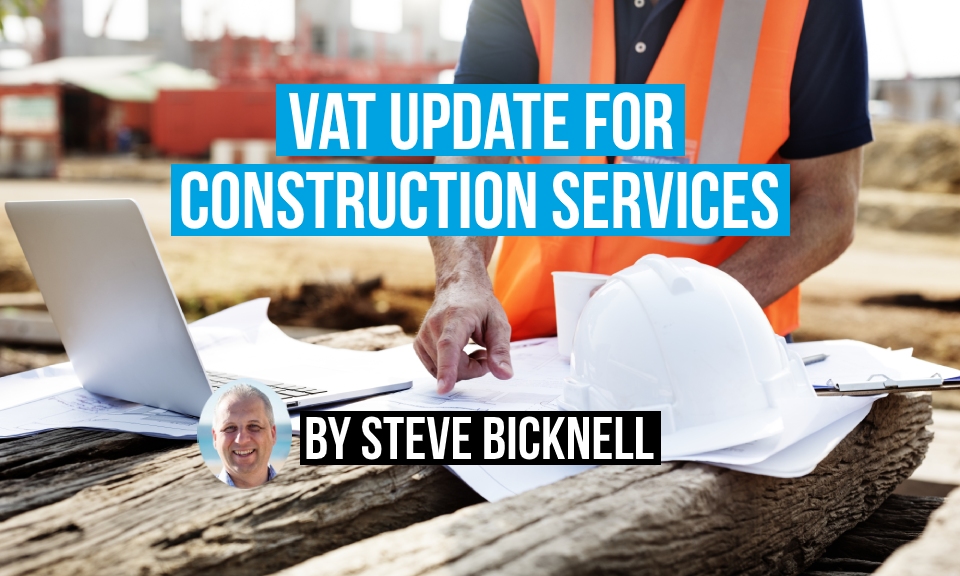From March 1st 2021, the domestic reverse charge VAT procedure will be introduced for the construction sector. You should start preparing for this change as soon as possible to avoid mistakes and fines.

The main change will be that the buyer will account for VAT for certain construction services rather than the supplier. This article outlines who is affected by this change and how to prepare.
What is domestic VAT reverse charge?
The domestic VAT reverse charge for building and construction services is an update to how VAT is reported for certain UK construction services.
This change is essentially an addition to the existing Construction Industry Scheme (CIS) which laid out rules for how to account for VAT between VAT registered contractors and subcontractors.
Previously, with transactions that fell within the scope of the CIS, the party supplying the construction services would account for the VAT. Now, this new change means that the customer will be reporting the VAT to HMRC instead of the supplier.
Who is affected by the domestic reverse charge?
From March 1st 2021, the domestic reverse charge must be applied for most supplies of construction services. This will affect individuals or businesses that are:
- registered for VAT in the UK
- registered for the Construction Industry Scheme (CIS)
- the customer is registered for VAT and the CIS in the UK
If any of these do not apply to your business, then you should use the standard VAT procedures.
Which services will include domestic reverse charge?
Only standard or reduced rate services will change. Zero-rated construction services will not be affected.
The following construction services will include domestic VAT reverse charge:
- construction, repairs, or demolition of buildings
- construction, repairs, or demolition of “part of the land”, for instance, power lines, roadworks, sewers, etc.
- installation of systems, including, lighting, heating, power, water, etc.
- cleaning, painting, or decorating a building during the course of construction
- other services that are required for completing the above services, for instance, site clearance, excavation, landscaping, etc.
Which services will exclude domestic reverse charge?
The domestic reverse charge will not apply to zero-rated construction services or to the following services if they are supplied on their own:
- drilling or extracting oil, natural gas, or minerals
- manufacturing or delivering building machinery or equipment
- manufacturing parts for systems including lighting, heating, power, water, etc.
- the work of architects, building engineers, decorators, landscapers, etc.
- creating or installing artwork, signboards, or advertisements
- installing blinds, seating, or security systems
The domestic reverse charge will also not apply to services received by “end users” and some intermediary suppliers. End users are individuals who receive services for their own use. You can read more about the specific exclusions on the UK Government website.
How to prepare for the domestic reverse charge
If this change will affect your business, you should start preparing as soon as possible. Some things you can do to prepare include:
- ensure that your invoicing and accounting software will be able to handle this change (for invoices, expenses, and your VAT Return)
- ensure that your accountant or finance staff are aware of how the domestic reverse charge works
- check which of your construction services will fall within the domestic reverse charge
- remember to update your invoice templates or make a note to include a reference to domestic reverse charge, along with the VAT due
- consider whether this may impact your cash flow (if you are no longer receiving VAT from invoices)
- check whether your business will receive any excluded supplies of services as an end-user or excluded intermediary
- review ongoing contracts and make any necessary changes
How to invoice with domestic reverse charge
The system will work similarly to how intra-EU reverse charge worked prior to Brexit. If the service falls under the requirements for the domestic reverse charge, then the invoice for the services will need to state “reverse charge” and include 0% VAT due.
However, since this is a domestic transaction, the invoice will also need to state how much VAT the customer needs to account for underneath the reverse charge label. This can be shown on your invoice as:
"Domestic reverse charge:
Customer to pay the VAT to HMRC.
VAT due: £XX.XX."
If your invoicing software does not allow you to show the VAT due underneath the reverse charge label, you can simply state that VAT should be accounted for at the standard rate by the customer.
Other than these changes, the invoice should include all of the required information on a VAT invoice.
What if my construction job begins before March 1st but ends after?
This will depend on when the tax point or time of supply is for this job. This is the date in which the VAT is due. Most of the time, this will be the VAT invoice issue date, or the date of payment, whichever occurs first.
If this date is on or after March 1st 2021, then the domestic reverse charge should be applied. If it is before March 1st, then domestic reverse charge will not apply.
Why is the domestic reverse charge being introduced?
Tax fraud has been quite prevalent in the construction sector. Along with the existing Construction Industry Scheme, the UK Government has decided to implement stricter procedures to ensure that construction businesses are properly accounting for VAT.
The domestic reverse charge for construction services was initially announced in 2018 but was delayed being implemented until March 1st 2021. For specific guidance on how this will affect your business, you should contact an accountant or visit the UK Government website.
